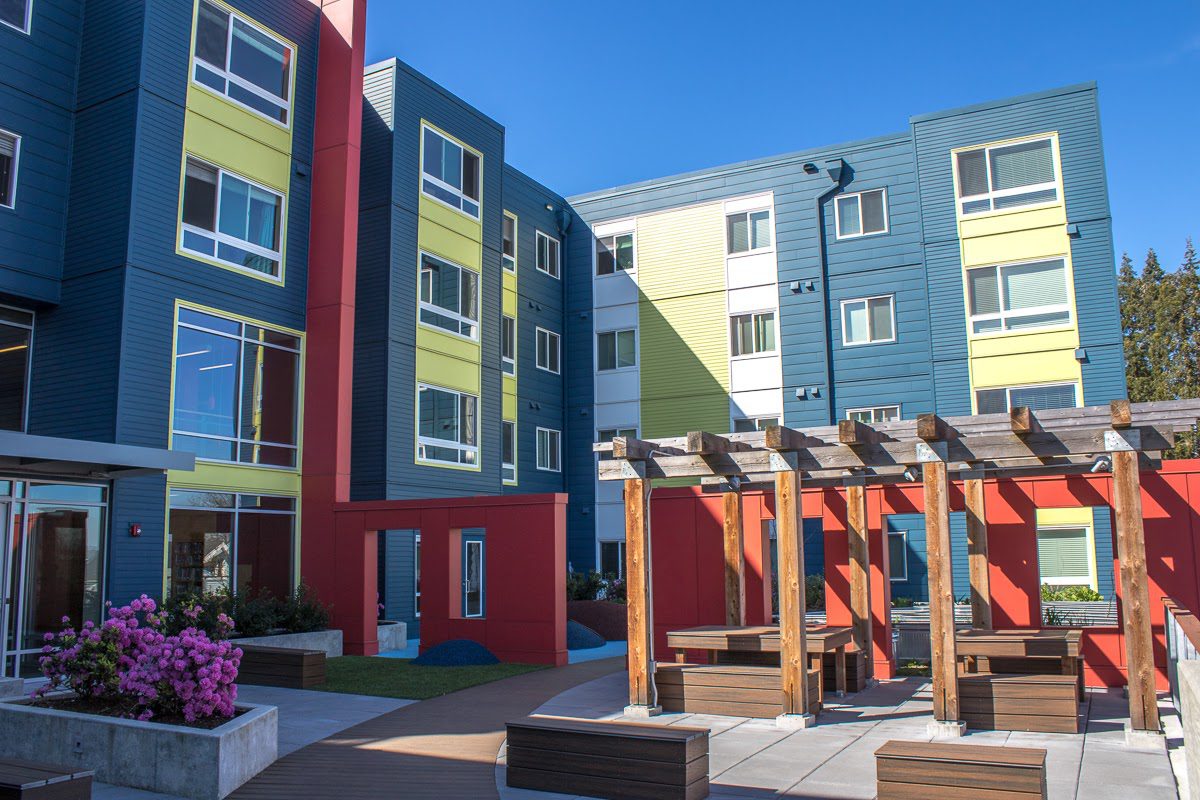
SEPA Urban Infill Exemption
Background
Cities and Counties planning under the Growth Management Act (GMA) are authorized to raise the development thresholds for SEPA review specifically to accommodate infill development (RCW 43.21C.229).
There is no statutory ceiling on these locally adopted thresholds. This authority is intended to encourage residential or mixed-use development in an urban growth area where the density and intensity goals of the comprehensive plan are not being met. To adopt infill exemptions to SEPA, the city/county must have prepared an environmental impact statement (EIS) on its comprehensive plan, or prepared an EIS that considers the proposed use and density in the area proposed for the infill exemption. Development must not exceed the density or intensity goals in the comprehensive plan.

Evaluation Process
To adopt infill categorical exemptions a GMA city of county should follow a general process, including the following steps.
Identify the density and intensity goals specified in the adopted comprehensive plan for
residential and mixed use development. If the density/intensity goals have been clearly
defined, continue to step 2. If the density/intensity goals are not clearly defined, it may be
necessary to update the comprehensive plan before adopting a new categorical exemption.
Evaluate recent residential and/or mixed use projects to identify a specific area(s) where the
density/intensity goals in the comprehensive plan are not being met. This review should
include consideration of restrictions in other regulations that may prevent the
density/intensity from occurring. For example, development in a critical area may be
limited due to a wetland buffer zone requirement in the critical area ordinance.
If review of the recent development indicates the density or intensity goals are not being
met, identify the development level needed to meet the goals within the selected area.

Requirements for Adopting Infill Exemption
Several criteria must be met for a GMA city or county to adopt a categorical exemption for infill development.
The exemption must be limited to new residential or mixed use development within
a designated urban growth area.
The existing density and intensity of use in the urban growth area must be lower
than called for in the goals and policies of the applicable city or county
comprehensive plan.
An EIS must have been completed for the adoption of the comprehensive plan. If the EIS analysis is not adequate, a supplemental EIS may need to be prepared before
adopting an infill exemption. This supplemental EIS should be prepared in conjunction
with the adoption or amendment of a subarea plan or an update of the comprehensive plan.
The proposed development must not exceed the density or intensity of use called
for in the goals and policies of the applicable city or county comprehensive plan
An EIS must have been completed for the adoption of the comprehensive plan

Code Updates
When drafting a code update to include a categorical exemption, the exemption should clearly indicate:
The level of residential or mixed-use development that will be exempt.
The area where the exemption will apply.
How the exemption will be applied to a proposed project.

Resources
Department of Ecology: SEPA Handbook
Code Example: City of Kent Municipal Code: Chapter 16.04.080
Code Example: City of Covington Municipal Code: Chapter 6.88.070

Why adopt the SEPA urban infill exemption?
The rate of housing production across our Pierce County community needs to increase significantly to keep pace with demand and avoid continued housing cost escalation due to shortages. Adopting a SEPA urban infill exemption is a policy action to reduce the time and cost of new housing development – both market-rate and affordable – and reduce risk and unpredictability for developers and allows municipal staff resources into reviewing other permits and policy updates rather than allocating time to the SEPA review process.
